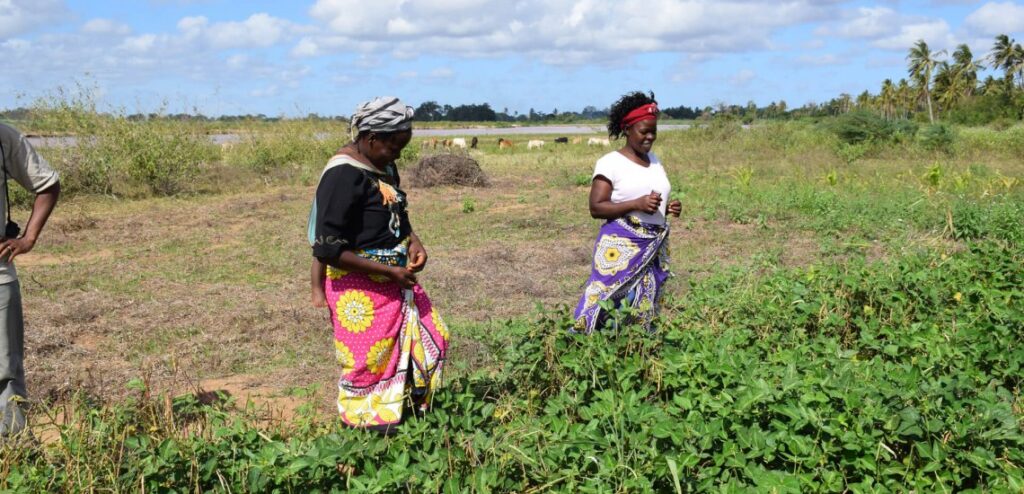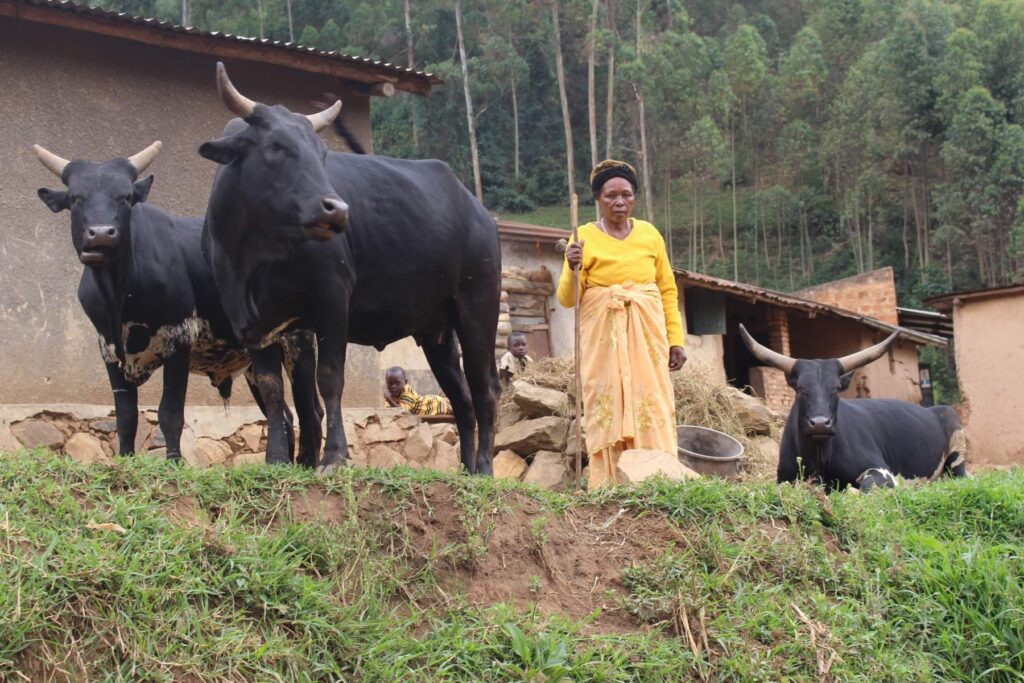5 ways to include more women in your conservation project

Conservation projects can’t work unless everyone in the local community is involved. But at the moment, many women are being left out. Our CEPF project in East Africa shares some simple steps on how to welcome women into the conversation.
By BirdLife International
This article was originally published on the CEPF website.
In order to be successful in the long term, conservation needs to include all members of the local community. If some people don’t believe it’s important to protect the ecosystem they live in, the project won’t succeed – or at least, not for long. But are we really including everyone? Often, the needs and concerns of the men in the community are heard, but various obstacles prevent women and youth from participating in the conversation – sometimes without conservationists even realizing it. In the Eastern Afromontane Biodiversity Hotspot, which includes 14 East African countries, the Critical Ecosystem Partnership Fund (CEPF) is making a concerted effort to tackle these challenges.
“In the Eastern Afromontane Hotspot, we talk a lot about gender, and these discussions never fail to be lively!” said Maaike Manten, leader of the Eastern Afromontane Regional Implementation Team. “However, including gender considerations in all aspects of a conservation project is not so easy, and there are still many barriers to pull down.”
As a first step, CEPF has created a Gender Toolkit for their grantees (local conservation organisations whose work they support on the ground). The guide helps groups to involve women in every stage of their projects. Here are its top five tips:
1. Include gender in your organisation’s policies
“Though women are very much engaged in environmental issues—farming, water collection, general natural resource use—we find that they are much less engaged in ‘professional’ conservation activities,” said Manten. “Women don’t have as many paid jobs in the sector as men. In certain countries, by far the majority of conservation practitioners who are employed by our grantees are male.”
With help from the new Gender Toolkit, CEPF grantees are working to address this inequity.
“The toolkit has helped us to reshape our gender policy, which is now in the advanced stages of approval,” said Medard Twinamatsiko Katonera from Mbarara University of Science and Technology in Uganda. “There were certain areas where gender needed to be incorporated more thoroughly, such as human resource management.”
Nature Kenya (BirdLife Partner) recently incorporated gender into its operations manual. “The policy aims to ensure that gender issues are included across all Nature Kenya programs,” said Paul Gacheru, Nature Kenya’s species and sites manager. “[Gender] needs to be documented and captured in all our plans and reporting procedures.”
2. Give women the confidence to take on leadership roles
For many women, not believing in their own ability to meaningfully participate in conservation is one of the biggest obstacles.
“In the field, community rangers tend to be men, not because women can’t do it, but because even women themselves used to think they can’t do it – until they do it,” Manten said. “Some female rangers we spoke with say that it was even a revelation to themselves that they can do the job well. Now they are examples to men and to other women, including their parents and friends.”
Conservation organizations can help women gain that missing confidence.
“Taking into consideration the cultural values of the communities we work with, most decision-making processes are patriarchal. The role of women and youth is much overlooked. This is also reflected in the leadership positions of these community groups,” said Gacheru. “Therefore, in our training activities with these groups, we ensure that gender matters are included throughout. For example, in governance structures of community groups, we encourage them to include women and youth in leadership positions. This is also translated into their governing bylaws and constitutions.”
From the beginning of a project, the Wildlife Conservation Society (Tanzania) explains to local people that everyone’s point of view will be valued. “We tell communities that the project will consider all genders. Their wishes will be addressed and each gender is asked to participate,” said Project Director Noah Mpunga. “Usually this increases interest, especially for women. It increases their confidence, especially in taking leadership positions.”
3. Keep track of how many women are getting involved
When developing project goals, CEPF grantees are using gender as one of their benchmarks. For example, instead of counting how many community members are provided with organic farming training – say, 20 people – that number can be separated by gender – e.g., 14 men and six women.
“Just counting the number of men and women may not tell you everything, but if you get into the habit of doing this, it becomes really interesting,” Manten said. “Some birdwatchers always count the flocks of birds they see. I do the same now with counting men and women. Today at lunch, I counted 17 men and two women, including myself, in our little lunch cafe. This tells me something. And if you do this often enough, you get a really good sense of how things stand.”
In Uganda, CEPF grantee Conservation Through Public Health is taking this one step further, using an attendance spreadsheet to keep track of names and genders and designing activities that include a minimum percentage of women participants. The spreadsheets help them stay focused on gender balance.
In addition to numbers, people’s stories can be useful, too. For instance, an organization can distribute anonymous surveys that ask community members how satisfied they were with their ability to participate in the project, and then compare the responses from women and men.

4. Rethink time and place. Changing a few logistics can greatly impact who can attend.
“The [gender] toolkit has helped us be mindful of the time at which we conduct community-awareness campaigns so that we do not interfere with the household work of women,” said Adalbert Aine-omucunguzi from the International Crane Foundation. “We now let the community members choose the most appropriate time for meetings.”
The organization has also changed where they hold their meetings. “We reduced the distance walked and hence the time [women] spend away from their daily domestic chores. Reports indicated that when meetings are in the vicinity of homes, husbands are more happy for their wives to attend,” Aine-omucunguzi said.
5. During meetings, consider giving women their own space.
CEPF grantee Resilience Now noticed that during their workshops and training, women were more likely to participate during smaller focus-group activities and role-play exercises rather than larger sessions. Now, the organization arranges events so that they include as many focus-group activities as possible, especially on the first day when women may be particularly nervous and uncomfortable speaking up.
According to Resilience Now’s Claire Galvez Wagler, grouping people by gender, and also age, has had an additional benefit – when the larger group comes back together, they are able to identify the different challenges that they face. “We have been able to stress the benefits of taking into account the opinions of men and women, young people and elders,” Galvez Wagler said.
Looking ahead to the future…
Sometimes, gender barriers can be broken simply by becoming aware of them – as seen above. Others, however, are more deeply rooted in a culture. “We are still a long way from where we want to be. But I do believe we can get there,” said Manten. “And even small steps can have big, immediate impacts.”
Download the CEPF Gender Toolkit to start incorporating gender into your own conservation work:


